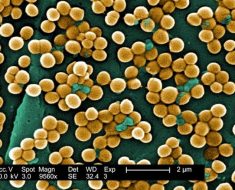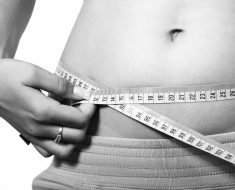There’s now a tool to measure how obese you might become and it’s not the scales.
Several factors shape our propensity to gain excess kilograms – and most are preventable. To help shine a light on this, researchers from the University of Navarra in Spain developed a dietary tool for calculating obesity risk and tested it on a large population sample.
Presenting their findings at the European Congress on Obesity in Vienna, Austria, last week, Clara Gómez-Donoso and colleagues reported a clear and compelling link between scores on the tool and long-term likelihood of becoming overweight or obese.
The Dietary Obesity Prevention Score (DOPS) is based on 14 food groups previously shown to boost or reduce obesity risk, adjusted for energy intake. Eating vegetables, fruits, legumes, yoghurt, nuts, fish and a high vegetable to animal protein ratio increases the score.
Conversely, consuming red meat, processed meat, refined grains, ultra-processed food, sugary drinks, beer and spirits reduces the score, which ranges from 14 to 42.
The team tested the DOPS in 11,349 middle-aged adults who signed up for the study and completed a series of assessments, including dietary questionnaires.
All participants started out with normal weight, but 2153 had become overweight or obese at a nine year follow-up. People with high DOPS scores were nearly half as likely to become overweight or obese as those with low scores.
Overall, for every 4 point increase in people’s scores – indicating a healthier diet – they were 13 per cent less likely to burden the scales. And that’s when other factors that contribute to weight gain were accounted for.
The researchers developed the tool to meet a global need to make dietary messages more effective. They plan to translate the score into food servings to help practitioners use it in clinical practice.
Gómez-Donoso believes this is the first obesity prevention tool that focuses on food groups. “This might help doctors to quickly and easily identify dietary risks and provide preventative counselling" she says, adding,
“From a behavioural perspective, food-based dietary advice is simpler to implement.”
Karen Murphy, clinical dietitian and senior research fellow at the University of South Australia, helped develop the DOPS and is impressed at its association with obesity risk. “I think this really solidifies what we know about obesity. But it also gives a time scale, showing that people who follow a healthy diet have less risk of developing obesity down the track.”
Murphy thinks this is a potent way to show people that shedding weight is not about going on a short-term "diet"– it’s about habitual food intake. “It’s not just singling out a single nutrient or a single food. It’s taking the whole dietary pattern and putting that into perspective.”
She suggests this could provide a valuable visual tool for health professionals. “You could easily show someone that if they change their diet a little bit their risk will change this much. Change it more and you’re going to be at much reduced risk of developing obesity.”
Murphy hopes this could encourage people to swap foods on the lower end of the scale for foods on the higher end to make sustainable changes.
“I’m still so stunned in practice when people say, ‘I don’t really eat that much.’ And when I ask them what they have, they say, ‘Well I had cornflakes for breakfast then I had a couple of biscuits for morning tea, then I had a salad roll – oh no I had two salad rolls – and I had some ham on that and then I went to Pizza Hut and had 8 slices of pizza and some salad and a soft drink, and I had some chocolate mousse.’”
This type of diet has become commonplace. “You know, 35 per cent of our energy intake in Australia now comes from these types of foods,” says Murphy.
And nearly two thirds of Australian adults and one in four children are overweight or obese. Carrying excess weight can lead to an array of chronic conditions like diabetes, heart disease, kidney failure, cancer and fatty liver, and causes heightened risk of premature mortality.
As the researchers acknowledge, dietary intake was self-reported, and although the new tool could encourage people to consume healthier diets, other contributing factors can’t be ignored. As The Lancet’s 2015 obesity series contended, “Today’s food environments exploit people’s biological, psychological, social, and economic vulnerabilities, making it easier for them to eat unhealthy foods.”
In turn, eating processed foods high in sugar, unhealthy fats and additives becomes addictive thereby leading to greater demand. To address this on a broad scale, The Lancet states, “Regulatory actions from governments and increased efforts from industry and civil society will be necessary to break these vicious cycles.”
Meanwhile, Gómez-Donoso says, “We must take advantage of these findings and the fact that obesity is largely preventable."
Source: Read Full Article






